Progressions to Purna Shalabhasana- the Full Locust Pose
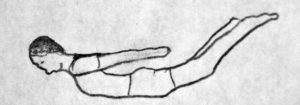 The Locust pose is a dynamic pose; a full body energizer and an excellent backbend for chest opening. The full pose is rather intimidating to most, but there are many ways to modify it so it becomes accessible. Here are a few progressions into the deeper forms of the pose.
The Locust pose is a dynamic pose; a full body energizer and an excellent backbend for chest opening. The full pose is rather intimidating to most, but there are many ways to modify it so it becomes accessible. Here are a few progressions into the deeper forms of the pose.
I like to start slow, with Sarpasana, or Snake Pose.
• Lie flat on your stomach. Place your forehead on the mat, arms extended down the side of the body with palms down. Legs extend with the tops of the feet connected to the mat. Breathe.
• Inhale and lift the head, shoulders and arms off the mat. Breathe. Inhale and lift the legs of the mat. Breathe a few breaths and lengthen through the spine.
• When ready lower the legs, arms and head down.
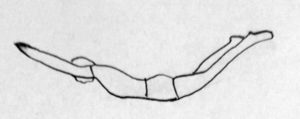 Optionally, I like to try to bring the arms out in front, as in Urdhva Mukha Navasana, or upward facing boat pose.
Optionally, I like to try to bring the arms out in front, as in Urdhva Mukha Navasana, or upward facing boat pose.
• Lie flat on your stomach. Place your forehead on the mat, arms extended out in front of you. Legs extend with the tops of the feet connected to the mat. Breathe.
• Inhale and lift the head and arms off the mat. Breathe. Inhale and lift the legs of the mat. Breathe a few breaths and lengthen through the spine.
• When ready lower the legs, arms and head down.
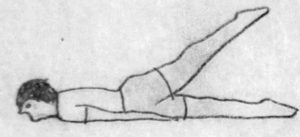 Next, we could explore the half locust, or Ardha Shalabhasana.
Next, we could explore the half locust, or Ardha Shalabhasana.
• Lie flat on your stomach. Place your forehead on the mat, arms extended down the side of the body with palms down. Legs extend with the tops of the feet connected to the mat. Breathe.
• Place the palms down on the mat beside you, or make fists with them and draw them together beneath you, as close together as possible.
• Inhale and raise the right leg. Breathe and hold for a few breaths.
• Exhale and lower the right leg down.
• Repeat on the other side, raising the left leg.
• Breathe and rest.
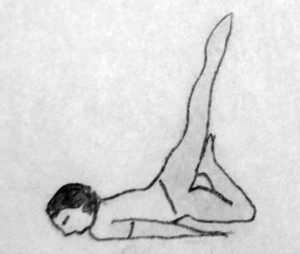
We could explore how it feels in Eka Pada Ardha Shalabhasana, or one legged half locust.
• Lie flat on your stomach, forehead down, and place your hands as stated above. Legs extend with the tops of the feet connected to the mat. Breathe.
• Inhale and raise the right leg. Exhale and bend the left knee, folding the left leg so the foot rests against the thigh (or shin if necessary) as a support for the right leg. Breathe and hold for a few breaths.
• Exhale and unfold the left leg and lower the right leg down.
• Repeat on the other side, raising the left leg.
• Breathe and rest.
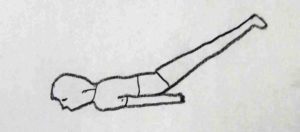 If you feel inspired, we could try Viparita Shalabhasana, or inverted locust pose, where both legs are lifted off the floor.
If you feel inspired, we could try Viparita Shalabhasana, or inverted locust pose, where both legs are lifted off the floor.
• Lie flat on your stomach, forehead down, and place your hands as stated above. Legs extend with the tops of the feet connected to the mat. Breathe.
• Inhale, then exhale as you raise both legs. Breathe and hold the pose for a few breaths.
•  There is a point where when the legs reach a certain height overhead, balance changes and it becomes easy to rest on the chest. Once stable at this point, bend the knees and lower the feet toward the head. Breathe and hold the pose for a few breaths.
There is a point where when the legs reach a certain height overhead, balance changes and it becomes easy to rest on the chest. Once stable at this point, bend the knees and lower the feet toward the head. Breathe and hold the pose for a few breaths.
• Exhale and lower both legs slowly down. Repeat if desired, then breathe and rest.
The final phase of Purna Shalabhasana, or full locust pose is the deepest backbend, and certainly not for everyone!
• 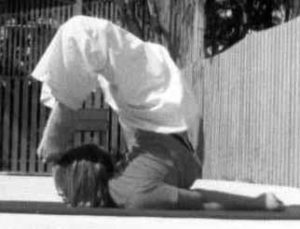 Lie flat on your stomach, forehead down, and place your hands as stated above. Legs extend with the tops of the feet connected to the mat. Breathe.
Lie flat on your stomach, forehead down, and place your hands as stated above. Legs extend with the tops of the feet connected to the mat. Breathe.
• Inhale, then exhale as you raise both legs as high as possible with a little extra thrust. Press your hands firmly into the mat to help raise the legs.
• Inhale and straighten the legs overhead. Exhale and slowly lower the legs back to the mat. Breathe and rest.
Conclude the sequence of poses with child’s pose, pranatasana.
Cautions: Back and neck problems.
Modifications: Raise the legs one at a time, only an inch off the ground if that is what is most comfortable for you. An option in Sarpasana is to raise the upper and lower bodies separately, not at the same time. Pay careful attention to sensations in the spine. Again, stay within you realm of comfort and listen to the feedback from your body (your best teacher).
Benefits: Creates “elasticity in the spine.” Strengthens the abdominal muscles and major muscle groups in the back and legs. Opens the thoracic spine and chest area. Massages the abdomen benefiting digestion. Promotes blood circulation. For some it can provide relief from sciatica.
It is recommended to learn these poses in the presence of and under the guidance of a competent teacher. Please learn these poses from them, and then explore for fully in your own personal practice.
Celebrating over 25 years of Teacher Training

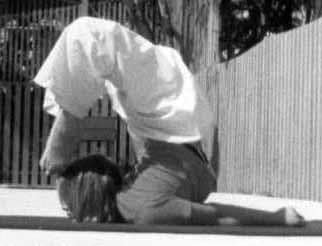
Recent Comments